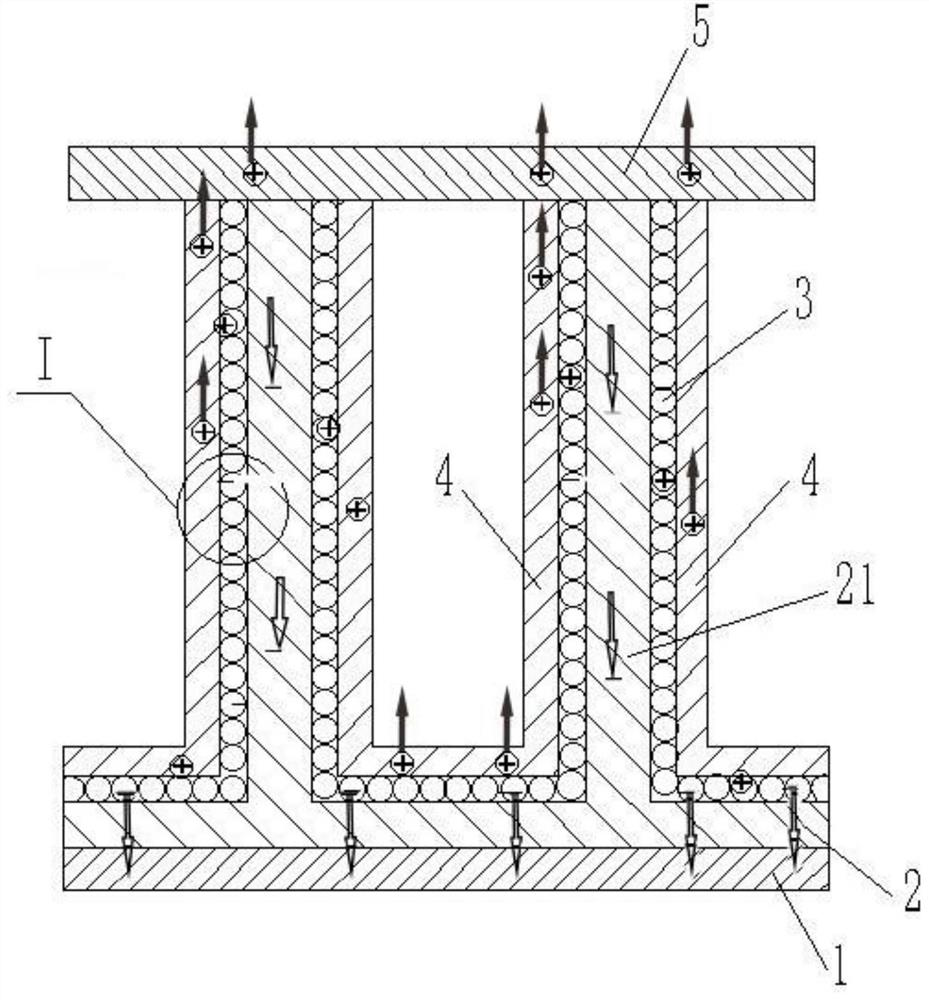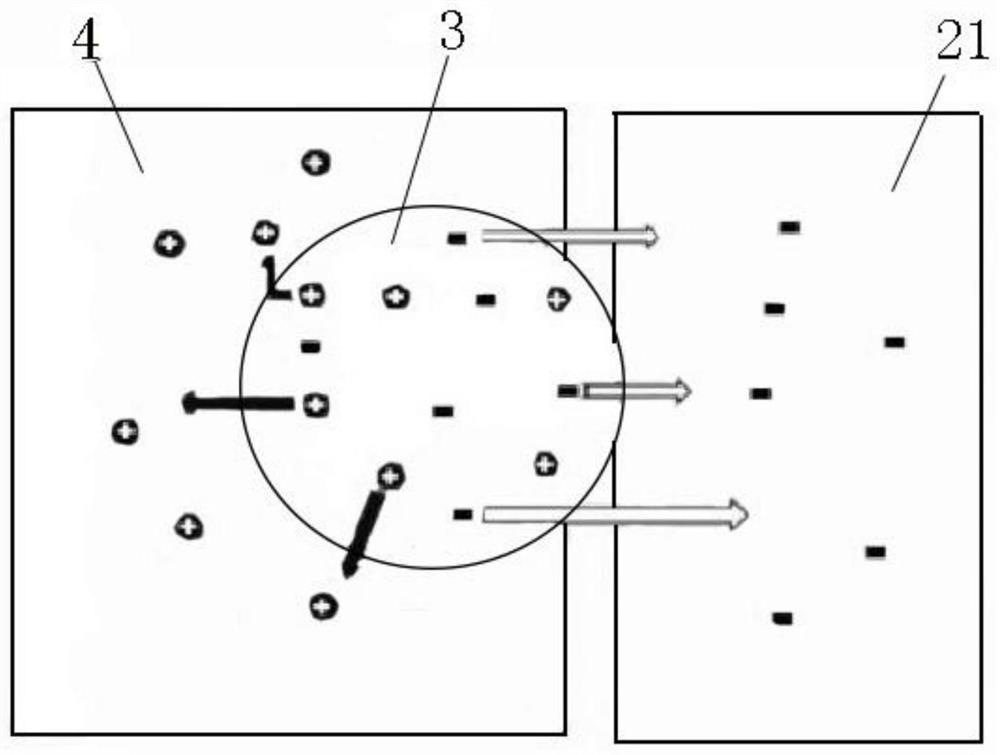Nanowire array solar cell with shell-core structure based on quantum dots
A nanowire array and solar cell technology, applied in the field of solar cells, can solve the problems of large energy loss at the interface between electrodes and electrolyte, chemical corrosion of charge recombination quantum dots, and influence of battery fill factor, etc., to improve photoelectric conversion efficiency and reduce charge Composite, Generate and Separate Guaranteed Effects
- Summary
- Abstract
- Description
- Claims
- Application Information
AI Technical Summary
Problems solved by technology
Method used
Image
Examples
Embodiment Construction
[0019] The present invention will be further described below in conjunction with the accompanying drawings.
[0020] see Figure 1-Figure 4 , a nanowire array solar cell with a core-shell structure based on quantum dots, comprising a bottom electrode 1 disposed on the bottom layer, the upper surface of the bottom electrode 1 is grown with several nanowires 21 made of transport materials along the vertical direction, Arranged in an array, the nanowire array forms the core layer of the solar cell, the core layer is the first transmission layer 2, and the surface of each nanowire has a number of quantum dots 3 evenly distributed, and the quantum dots form a quantum dot layer, as a solar energy The light-absorbing layer of the battery is excited by light to generate electrons and holes. The quantum dot layer and the nanowires together form a quantum dot nanowire array. A shell layer is provided outside the quantum dot nanowire array, and the shell layer is the second transport lay...
PUM
| Property | Measurement | Unit |
|---|---|---|
| diameter | aaaaa | aaaaa |
Abstract
Description
Claims
Application Information
 Login to View More
Login to View More - R&D
- Intellectual Property
- Life Sciences
- Materials
- Tech Scout
- Unparalleled Data Quality
- Higher Quality Content
- 60% Fewer Hallucinations
Browse by: Latest US Patents, China's latest patents, Technical Efficacy Thesaurus, Application Domain, Technology Topic, Popular Technical Reports.
© 2025 PatSnap. All rights reserved.Legal|Privacy policy|Modern Slavery Act Transparency Statement|Sitemap|About US| Contact US: help@patsnap.com



